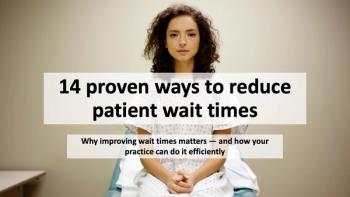
Risk-based agreements: Good for business, patients
When managed effectively—and supported by ample collaboration and data exchange—risk-based models promote better business results for practices by achieving better outcomes for patients.
Practices are questioning whether to accept
As the COVID-19 pandemic has deepened the financial and psychological challenges for practices, the idea of taking on the risk of a value-based care model may seem like an incredibly high hurdle in the current climate. Yet this is precisely the time to appreciate the substantial benefits that risk-based agreements offer both patients and practices.
When constructed properly, risk-based agreements reward practices that double-down on care management strategies that improve patient outcomes and stabilize practice reimbursement as they lower overall health costs. That’s because unlike traditional fee-for-service (FFS) models that reimburse based on service volume, risk agreements’ compensation structure pays practices for proactively managing key clinical factors and patient conditions, such as diabetes or smoking habits.
By focusing on outcomes, practices must also embrace and address the impact that
Even before COVID-19, however, many studies showed connections between SDoH factors, such as food insecurity and
What to consider
The benefits of improving patient outcomes from risk-based models have been well documented over the years and there is a continued increase in quantifiable results from programs that successfully navigate the new payment systems; however, many organizations have yet to fully embrace these contracts.
There are many different risk-based models for practices to consider, and most fall along a risk continuum that looks something like this:
- Stage 1: FFS. Practices get paid for the volume of services they provide. When the number of services drops, so does reimbursement.
- Stage 2: Pay for performance. Practices begin to get paid for managing the care of specific populations. Incentivized to identify and address contractually defined gaps in care.
- Stage 3: Shared risk/bundled payments. Shared savings with upside risk only. Practices accept multi-year risk-sharing across a group, looking at contract management, claims, and costs.
- Stage 4: Capitation/global payments. Practices accept full upside and downside risk, typically through multi-year arrangements that require mature capabilities.
At their core, risk-based models should inspire the flexibility to deliver care in the manner most effective for patients’ overall health. The financial model should encourage practices to offer services that usually are not reimbursed—such as care management or telehealth services, for example—as well as address SDoH.
To decide on the best risk-based arrangement for an individual practice or practice group, providers should ask themselves the following questions:
- Which payers have progressive policies around chronic condition management, including active investment in services to address patients’ SDoH challenges?
- Does the payer’s quality or population health reporting give you insights into non-traditional gaps such as SDoH gaps or behavioral health gaps?
- Does the payer’s benefit coverage include holistic, person-centered care—including behavioral health?
- Which payers have similar requirements for quality reporting that could simplify testing and scaling risk-based arrangements?
- Does the payer’s approach to utilization management empower the practice to make decisions about its service and treatment offerings?
How to transition
Practices that successfully transition from FFS to risk-based arrangements often start small and slowly increase the percentage of their revenue tied to risk-based agreements over time. Since newer Medicare SSP models tend to reduce the window for upside risk and accelerate the engagement of downside risk, practices may want to focus first on existing targets for clinical improvement. For example, if you already have a process for ensuring patients have their annual HbA1c test or mammogram screenings, build on those programs to close any final gaps and then address more complex needs.
More often than not, practices will need to revamp some processes to make them consistent and repeatable across payer contracts, and to ensure alignment among the practice’s clinical and administrative efforts. In addition, practices and payers must strengthen their collaboration.
A commitment to data-sharing is a crucial part to executing these risk-based contracts, including understanding SDoH and improving population health. In fact, the ability to gather and access data all along the care continuum (payer, provider, patient, and potentially leveraging external data sources) is the only way to move the needle on patient outcomes. While the quality metrics measured will vary with each contract, payers should be willing to give practices supporting clinical and cost data about the patient populations impacted. This enables the practice to assess where improvements are needed, as well as provide the appropriate patient outreach.
The benefits of risk
In an FFS environment, practices that identify SDoH among their patients sometimes try to address the issues through hand-offs to social services. Sometimes the processes work well; other times, patients fall through the cracks.
Risk-based models, on the other hand, encourage practices to use quantitative and qualitative data to identify SDoH to leverage internal care management workflows to address them. Thoughtful programs need to be employed to be effective in your impact for SDoH related issues. When managed effectively—and supported by ample collaboration and data exchange—risk-based models promote better business results for practices by achieving better outcomes for patients.
Newsletter
Optimize your practice with the Physicians Practice newsletter, offering management pearls, leadership tips, and business strategies tailored for practice administrators and physicians of any specialty.








